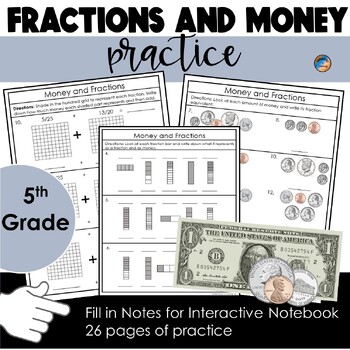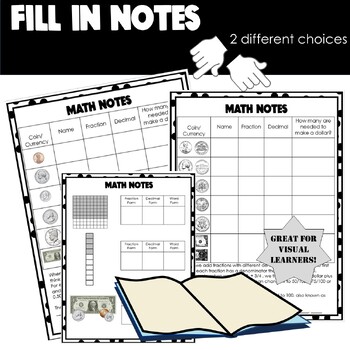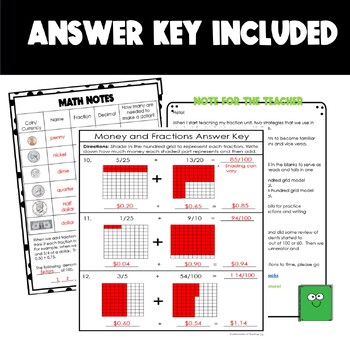Relating Fractions to Money and Decimals Practice Pages
- PDF
Description
Show your students the relationship between fractions and money! It is never too early for students to start learning about what half of a dollar is and how that relates to decimals.
THIS PRODUCT INCLUDES:
•Two pages of math notes for students to fill in the blanks to serve as a study
guide and reference. (I included heads and tails in one format for your
preference.)
• Six pages of adding fractions using the hundred grid model
and converting each fraction to a decimal.
• Six pages of subtracting fractions using the hundred grid model
and converting each fraction to a decimal.
• Two pages with fraction bars
• Ten pages using realistic coins and dollar bills for practice
• Two bonus pages of finding equivalent fractions and writing decimal form from fractions.
• Answer key
Another great skill for students to practice is relating fractions to time using clocks. If you would like this resource, please click on the link below:
Relating Fractions with Time Using Clocks
If you have any questions, please message me and I will gladly help!
Thank you for visiting and Happy Teaching,
Fundamentals in Teaching





